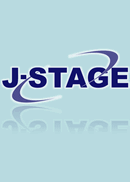Volume 84, Issue 4
Displaying 1-11 of 11 articles from this issue
- |<
- <
- 1
- >
- >|
ESSAY
-
2022Volume 84Issue 4 Pages 191-192
Published: July 01, 2022
Released on J-STAGE: April 04, 2025
Download PDF (1254K)
SPECIAL EDITION
-
2022Volume 84Issue 4 Pages 193
Published: July 01, 2022
Released on J-STAGE: April 04, 2025
Download PDF (1225K) -
2022Volume 84Issue 4 Pages 194-203
Published: July 01, 2022
Released on J-STAGE: April 04, 2025
Download PDF (3339K) -
2022Volume 84Issue 4 Pages 204-208
Published: July 01, 2022
Released on J-STAGE: April 04, 2025
Download PDF (2052K) -
2022Volume 84Issue 4 Pages 209-213
Published: July 01, 2022
Released on J-STAGE: April 04, 2025
Download PDF (1740K)
TECHNO-TOPICS
-
2022Volume 84Issue 4 Pages 214-216
Published: July 01, 2022
Released on J-STAGE: April 04, 2025
Download PDF (1757K)
PAPERS (Articles)
RESEARCH PAPERS
-
2022Volume 84Issue 4 Pages 229-237
Published: July 01, 2022
Released on J-STAGE: April 04, 2025
Download PDF (1978K) -
2022Volume 84Issue 4 Pages 238-244
Published: July 01, 2022
Released on J-STAGE: April 04, 2025
Download PDF (2688K) -
2022Volume 84Issue 4 Pages 245-255
Published: July 01, 2022
Released on J-STAGE: April 04, 2025
Download PDF (1663K) -
2022Volume 84Issue 4 Pages 256-264
Published: July 01, 2022
Released on J-STAGE: April 04, 2025
Download PDF (3797K)
SHORT REPORTS
-
2022Volume 84Issue 4 Pages 265-266
Published: July 01, 2022
Released on J-STAGE: April 04, 2025
Download PDF (1475K)
- |<
- <
- 1
- >
- >|
